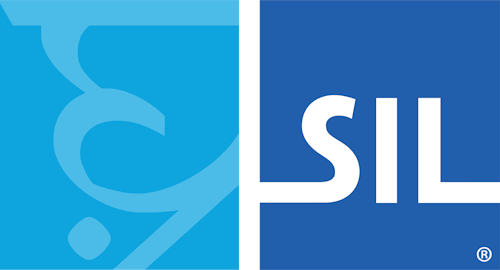Getting Started with Keyman Desktop
Follow these steps for a basic introduction to Keyman Desktop:
Note
Keyman Desktop must be installed first. For help on installing Keyman Desktop, please see: How To - Download and Install Keyman Desktop.Step 1

Check the Windows Taskbar near the clock to see if Keyman Desktop is running. If it is running you will see the Keyman Desktop icon: ![]()
Step 2
If the Keyman Desktop icon is in the Windows Taskbar near the clock, continue on to Step 5.

If the Keyman Desktop icon is not on the Windows Taskbar near the clock, click the arrow or triangle next to the clock:
You will see a collection of icons. If the Keyman Desktop icon (
 ) is not in this collection, Keyman Desktop is not running. Read steps 3 and 4 to learn how to start Keyman Desktop.
) is not in this collection, Keyman Desktop is not running. Read steps 3 and 4 to learn how to start Keyman Desktop.If the Keyman Desktop icon is in this collection, you should move it permanently to the Windows Taskbar. Here's how:
On Windows 7:
Open the Windows Start menu.
In the search field, type and enter: Notification Area Icons
From the dropdown menu beside SIL International Keyman Engine x86, select 'Show icon and notifications'.

Click to apply changes. The Keyman Desktop icon will now always appear in the Windows Taskbar near the clock, if Keyman Desktop is on.
Continue on to Step 5 of this guide.
On Windows 8:
Right-click on the Windows Taskbar.

Select 'Properties'.
Next to 'Notification area', click .
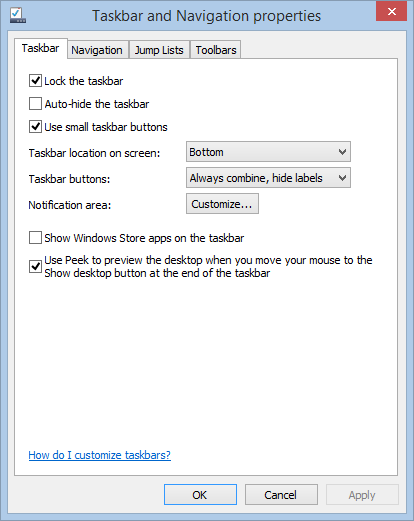
From the dropdown menu beside SIL International Keyman Engine x86, select 'Show icon and notifications'.
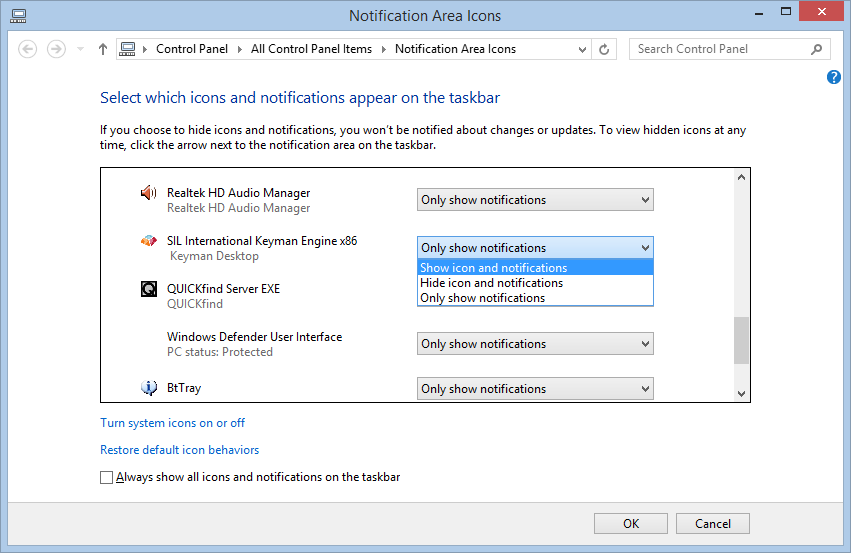
Click to apply changes. The Keyman Desktop icon will now always appear in the Windows Taskbar near the clock, if Keyman Desktop is on.
Continue on to Step 5 of this guide.
On Windows 10
Right-click on the Windows Taskbar.
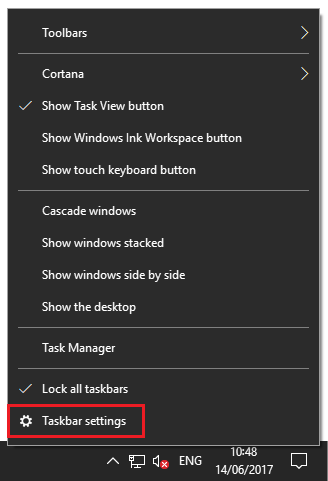
Select 'Taskbar settings'.
Under 'Notification area', click on 'Select which icons appear on the taskbar'
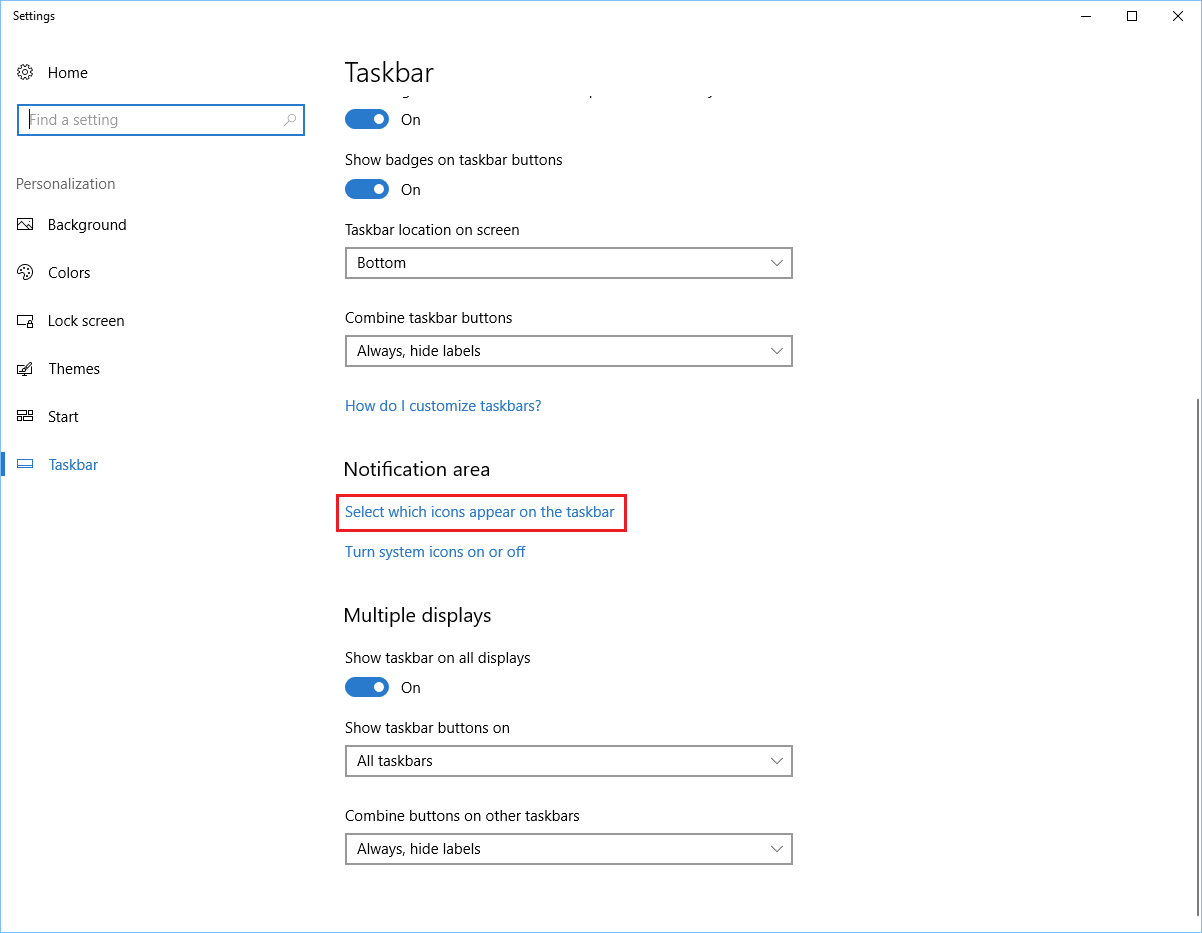
From the toggle button beside 'SIL International Keyman Engine x86', click to turn it on.
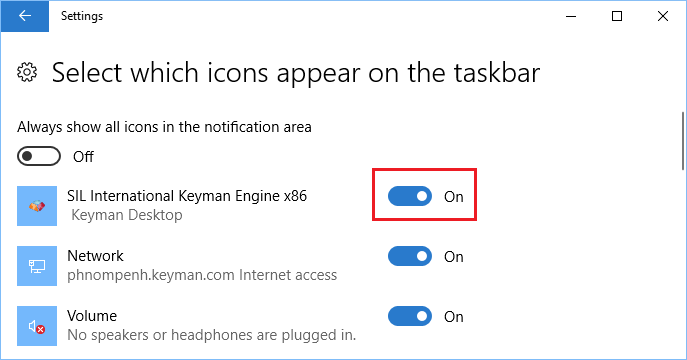
The Keyman Desktop icon will now always appear in the Windows Taskbar near the clock, if Keyman Desktop is on.
Continue on to Step 5 of this guide.
Step 3
To Start Keyman Desktop, click on the Windows Start Menu, select All Programs, and select Keyman Desktop.
Step 4

Keyman Desktop will now be running and the Keyman Desktop icon will be on the Windows Taskbar near the clock.
Step 5
Open a typing application, like Microsoft Word.
Step 6

Select a Keyman keyboard from the Keyman menu. You will notice the Keyman menu icon change to the icon of your Keyman keyboard. This means your Keyman keyboard is on.
Tip
If there are no Keyman keyboards in the Keyman menu, you can learn how to install one here: How To - Download and Install a Keyman KeyboardStep 7
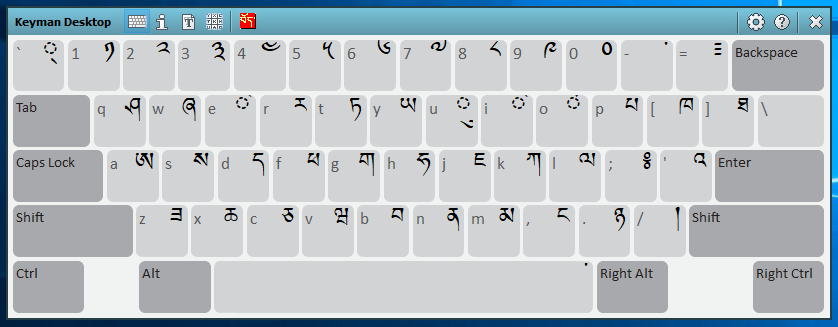
To learn how to type with your new Keyman keyboard, open the On Screen Keyboard tool of the Keyman Toolbox. You can open the On Screen Keyboard tool from the On Screen Keyboard link in the Keyman menu.
Tip
Some Keyman keyboards do not include an On Screen Keyboard. You can usually find help for these keyboards from the Keyboard Usage tool of the Keyman Toolbox. You can open the Keyboard Usage tool from the Keyboard Usage link in the Keyman menu.Step 8
You can now start typing in your language in almost any application. Use your hardware keyboard or click the On Screen Keyboard keys to type.
Step 9
To return to using your normal keyboard, open the Keyman menu and click 'Switch Keyman Desktop Off'.




